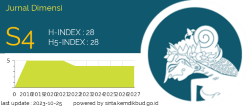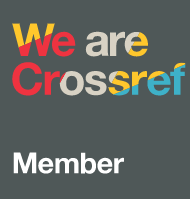PENGEMBANGAN MODUL DIGITAL KEPENYULUHAN BUDDHA: INOVASI MEDIA LITERASI DIGITAL DALAM PENYULUHAN AGAMA BUDDHA
Abstract
Keywords
Full Text:
PDFReferences
Bodhi, B. (2017). The Buddha’s Teachings on Social and Communal Harmony: An Anthology of Discourses from the Pali Canon. Wisdom Publications.
Bodhi, Bhikkhu. (2010). Sagāthāvagga Khotbah-Khotbah Berkelompok Sang Buddha.
Branch, R. M. (2009). Instructional Design: The ADDIE Approach. Springer Science & Business Media.
Brown, M., McCormack, M., Reeves, J., Brooks, D. C., & Grajek, S. (2020). 2020 EDUCAUSE Horizon Report, Teaching and Learning Edition.
Buckingham, D. (2007). Digital Media Literacies: Rethinking Media Education in the Age of the Internet.
Campbell, H. A., & Evolvi, G. (2020). Living Religion in Digital Spaces. Information, Communication & Society.
Campbell, H. A., & Garner, S. (2016). Networked Theology: Negotiating Faith in Digital Culture. Baker Academic.
Cavanaugh, C., Hargis, J., Munns, S., & Kamali, T. (2018). ICelebrate Teaching and Learning: Sharing the IPad Experience. Journal of Teaching and Learning with Technology.
Chan, T. W., Roschelle, J., Hsi, S., Kinshuk, K., Sharples, M., Brown, T., & Hoppe, U. (2019). One-to-One Technology-Enhanced Learning: An Opportunity for Global Research Collaboration.
Chau, M., Wong, A., Wang, M., Lai, S., Chan, K. W., Li, T. M., Chu, D., Chan, I., & Sung, W. (2018). Using 3D Virtual Environments to Facilitate Students in Constructivist Learning.
Clark, R. C., & Mayer, R. E. (2016). E-Learning and the Science of Instruction: Proven Guidelines for Consumers and Designers of Multimedia Learning. Wiley.
Dewi, Metta Puspita. (2019). Peran Dan Tantangan Penyuluh Agama Buddha Di Desa Kalimanggis Kecamatan Kaloran Kabupaten Temanggung Dalam Mengendalikan Ingroup Favorits. Jurnal Agama Buddha Dan Ilmu Pengetahuan.
Van Dijk, J. A. (2020). The Digital Divide. John Wiley & Sons.
Eshet-Alkalai, Y. (2004). Digital Literacy: A Conceptual Framework for Survival Skills in the Digital Era.
Fitriyadi, H. (2013). Integrasi Teknologi Informasi Komunikasi Dalam Pendidikan: Potensi Manfaat, Masyarakat Berbasis Pengetahuan, Pendidikan Nilai, Strategi Implementasi Dan Pengembangan Profesional. Jurnal Pendidikan Teknologi Dan Kejuruan.
Garzón, J., & Acevedo, J. (2019). Meta-Analysis of the Impact of Augmented Reality on Students’ Learning Gains. Educational Research Review.
Gilster, P. (1997). Digital Literacy. Wiley Computer Publishing.
Graham, C. R., Borup, J., Short, C. R., & Archambault, L. (2019). Blended Teaching and Personalized Learning: A Practical Guide for K-12 Teachers. EdTech Books.
Jenkins, K. E., & Crawford, S. E. (2016). Digital Faith: Religion in a Digital Age. In The Oxford Handbook of Religion and American Politics.
Kirkpatrick, J. D., & Kirkpatrick, W. K. (2016). Kirkpatrick’s Four Levels of Training Evaluation. Association for Talent Development.
Koehler, M. J., & Mishra, P. (2017). What Is Technological Pedagogical Content Knowledge? Contemporary Issues in Technology and Teacher Education,.
Kozma, R., & Vota, W. S. (2014). ICT in Developing Countries: Policies, Implementation, and Impact. In Handbook of Research on Educational Communications and Technology.
Lowenthal, P. R., & Hodges, C. B. (2015). In Search of Quality: Using Quality Matters to Analyze the Quality of Massive, Open, Online Courses (MOOCs).
Maulana, Andi, Subyantoro Subyantoro, Tommi Yuniawan, and Rahayu Pristiwati. (2019.) Pengembangan Modul Literasi Digital Berbasis Budaya Lokal Jawa Tengah. 78–84.
Mayer, R. E. (2009). Multimedia Learning (2nd Ed.). Cambridge University Press.
Merrill, M. D. (2014). First Principles of Instruction: Identifying and Designing Effective, Efficient and Engaging Instruction. Pfeiffer.
Metscher, S. E., Tramantano, J. S., & Wong, K. M. (2019). Digital Natives and Digital Immigrants: Exploring Online Harassment Victimization by Generational Age. International Journal of Cyber Criminology.
Mezirow, J. (1997). Transformative Learning: Theory to Practice. New Directions for Adult and Continuing Education.
Moore, J. L., Dickson-Deane, C., & Galyen, K. (2011). E-Learning, Online Learning, and Distance Learning Environments: Are They the Same? The Internet and Higher Education.
Palfrey, J., & Gasser, U. (2016). Born Digital: How Children Grow up in a Digital Age. Basic Books.
Prensky, M. (2001). Digital Natives, Digital Immigrants Part 1. On the Horizon.
Radich, M. (2016). Buddhism in the Digital Age: Digital Humanities and Buddhist Studies. Journal of the Japanese Association for Digital Humanities.
Reeves, T. C., & Oh, E. J. (2017). The Goals and Methods of Educational Technology Research over a Quarter Century. Educational Technology Research and Development.
Rose, D. H., & Meyer, A. (2016). A Practical Reader in Universal Design for Learning. Harvard Education Press.
Sholikha, Siti Mazilatus, Muhammad Miftah Farid, and Eka Hendi Andriansyah. (2022). Penggunaan Modul Digital Dalam Meningkatkan Prestasi Belajar Siswa Program Percepatan Sks Kota Surabaya. Jurnal Ekonomi Pendidikan Dan Kewirausahaan 10(1):73–82. doi: 10.26740/jepk.v10n1.p73-82.
Song, D., & Bonk, C. J. (2018). Motivational Factors in Self-Directed Informal Learning from Online Learning Resources. Cogent Education.
Sugiyono. (2017). Metode Penelitian & Pengembangan: Research and Development. 128.
Suharno, Hariyanto, and Ngadat. (2020). Eksistensi Penyuluh Agama Buddha Dalam Bodhi, B. (2017). The Buddha’s Teachings on Social and Communal Harmony: An Anthology of Discourses from the Pali Canon. Wisdom Publications.
Bodhi, Bhikkhu. (2010). Sagāthāvagga Khotbah-Khotbah Berkelompok Sang Buddha.
Branch, R. M. (2009). Instructional Design: The ADDIE Approach. Springer Science & Business Media.
Brown, M., McCormack, M., Reeves, J., Brooks, D. C., & Grajek, S. (2020). 2020 EDUCAUSE Horizon Report, Teaching and Learning Edition.
Buckingham, D. (2007). Digital Media Literacies: Rethinking Media Education in the Age of the Internet.
Campbell, H. A., & Evolvi, G. (2020). Living Religion in Digital Spaces. Information, Communication & Society.
Campbell, H. A., & Garner, S. (2016). Networked Theology: Negotiating Faith in Digital Culture. Baker Academic.
Cavanaugh, C., Hargis, J., Munns, S., & Kamali, T. (2018). ICelebrate Teaching and Learning: Sharing the IPad Experience. Journal of Teaching and Learning with Technology.
Chan, T. W., Roschelle, J., Hsi, S., Kinshuk, K., Sharples, M., Brown, T., & Hoppe, U. (2019). One-to-One Technology-Enhanced Learning: An Opportunity for Global Research Collaboration.
Chau, M., Wong, A., Wang, M., Lai, S., Chan, K. W., Li, T. M., Chu, D., Chan, I., & Sung, W. (2018). Using 3D Virtual Environments to Facilitate Students in Constructivist Learning.
Clark, R. C., & Mayer, R. E. (2016). E-Learning and the Science of Instruction: Proven Guidelines for Consumers and Designers of Multimedia Learning. Wiley.
Dewi, Metta Puspita. (2019). Peran Dan Tantangan Penyuluh Agama Buddha Di Desa Kalimanggis Kecamatan Kaloran Kabupaten Temanggung Dalam Mengendalikan Ingroup Favorits. Jurnal Agama Buddha Dan Ilmu Pengetahuan.
Van Dijk, J. A. (2020). The Digital Divide. John Wiley & Sons.
Eshet-Alkalai, Y. (2004). Digital Literacy: A Conceptual Framework for Survival Skills in the Digital Era.
Fitriyadi, H. (2013). Integrasi Teknologi Informasi Komunikasi Dalam Pendidikan: Potensi Manfaat, Masyarakat Berbasis Pengetahuan, Pendidikan Nilai, Strategi Implementasi Dan Pengembangan Profesional. Jurnal Pendidikan Teknologi Dan Kejuruan.
Garzón, J., & Acevedo, J. (2019). Meta-Analysis of the Impact of Augmented Reality on Students’ Learning Gains. Educational Research Review.
Gilster, P. (1997). Digital Literacy. Wiley Computer Publishing.
Graham, C. R., Borup, J., Short, C. R., & Archambault, L. (2019). Blended Teaching and Personalized Learning: A Practical Guide for K-12 Teachers. EdTech Books.
Jenkins, K. E., & Crawford, S. E. (2016). Digital Faith: Religion in a Digital Age. In The Oxford Handbook of Religion and American Politics.
Kirkpatrick, J. D., & Kirkpatrick, W. K. (2016). Kirkpatrick’s Four Levels of Training Evaluation. Association for Talent Development.
Koehler, M. J., & Mishra, P. (2017). What Is Technological Pedagogical Content Knowledge? Contemporary Issues in Technology and Teacher Education,.
Kozma, R., & Vota, W. S. (2014). ICT in Developing Countries: Policies, Implementation, and Impact. In Handbook of Research on Educational Communications and Technology.
Lowenthal, P. R., & Hodges, C. B. (2015). In Search of Quality: Using Quality Matters to Analyze the Quality of Massive, Open, Online Courses (MOOCs).
Maulana, Andi, Subyantoro Subyantoro, Tommi Yuniawan, and Rahayu Pristiwati. (2019.) Pengembangan Modul Literasi Digital Berbasis Budaya Lokal Jawa Tengah. 78–84.
Mayer, R. E. (2009). Multimedia Learning (2nd Ed.). Cambridge University Press.
Merrill, M. D. (2014). First Principles of Instruction: Identifying and Designing Effective, Efficient and Engaging Instruction. Pfeiffer.
Metscher, S. E., Tramantano, J. S., & Wong, K. M. (2019). Digital Natives and Digital Immigrants: Exploring Online Harassment Victimization by Generational Age. International Journal of Cyber Criminology.
Mezirow, J. (1997). Transformative Learning: Theory to Practice. New Directions for Adult and Continuing Education.
Moore, J. L., Dickson-Deane, C., & Galyen, K. (2011). E-Learning, Online Learning, and Distance Learning Environments: Are They the Same? The Internet and Higher Education.
Palfrey, J., & Gasser, U. (2016). Born Digital: How Children Grow up in a Digital Age. Basic Books.
Prensky, M. (2001). Digital Natives, Digital Immigrants Part 1. On the Horizon.
Radich, M. (2016). Buddhism in the Digital Age: Digital Humanities and Buddhist Studies. Journal of the Japanese Association for Digital Humanities.
Reeves, T. C., & Oh, E. J. (2017). The Goals and Methods of Educational Technology Research over a Quarter Century. Educational Technology Research and Development.
Rose, D. H., & Meyer, A. (2016). A Practical Reader in Universal Design for Learning. Harvard Education Press.
Sholikha, Siti Mazilatus, Muhammad Miftah Farid, and Eka Hendi Andriansyah. (2022). Penggunaan Modul Digital Dalam Meningkatkan Prestasi Belajar Siswa Program Percepatan Sks Kota Surabaya. Jurnal Ekonomi Pendidikan Dan Kewirausahaan 10(1):73–82. doi: 10.26740/jepk.v10n1.p73-82.
Song, D., & Bonk, C. J. (2018). Motivational Factors in Self-Directed Informal Learning from Online Learning Resources. Cogent Education.
Sugiyono. (2017). Metode Penelitian & Pengembangan: Research and Development. 128.
Suharno, Hariyanto, and Ngadat. (2020). Eksistensi Penyuluh Agama Buddha Dalam Mempertahankan Keyakinan Umat Buddha. 1(1).
Tapscott, D. (2009). Grown up Digital: How the Net Generation Is Changing Your World. McGraw-Hill.
Thanissaro, P. N. (2016). Temple-Going Teens: Religiosity and Identity of Buddhists Growing up in Britain. Identity and Belonging in a Changing Great Britain.
Wang, F., & Hannafin, M. J. (2015). Design-Based Research and Technology-Enhanced Learning Environments.
Waruwu, Marinu. (2024). Metode Penelitian Dan Pengembangan R & D: Konsep, Jenis, Tahapan Dan Kelebihan. Jurnal Ilmiah Profesi Pendidikan.
Weller, M. (2020). 25 Years of Ed Tech. Athabasca University Press.
Williams, R., & Tollett, J. (2019). The Non-Designer’s Design Book. Peachpit Press.
Zheng, L., Bhagat, K. K., Zhen, Y., & Zhang, X. (2021). The Effectiveness of the Flipped Classroom on Students’ Learning Achievement and Learning Motivation: A Meta-Analysis. Educational Technology & Society.
DOI: https://doi.org/10.33373/dms.v14i1.7574
Refbacks
- There are currently no refbacks.

This work is licensed under a Creative Commons Attribution 4.0 International License.











